Thinking about renovating your kitchen for the first time? It’s an exciting project that can dramatically improve your home’s function, style, and value. But without a solid plan, a kitchen renovation can quickly become overwhelming. With countless decisions, unexpected challenges, and potential disruptions, it’s easy to feel unsure of where to start.
If you’re planning your first kitchen renovation, this beginner’s guide will walk you through every step, from early goal setting to contractor agreements and everything in between. With the right preparation, you can enjoy a smooth, successful remodeling journey that brings your dream kitchen to life.
1. Define Your Renovation Goals

Start by identifying the main reasons you want to renovate your kitchen. This will shape every decision moving forward.
Ask yourself:
- Are you looking for more space or a better layout?
- Do you need modern appliances or more efficient storage?
- Are you updating for resale or long-term living?
Clarifying your goals will help you prioritize features and stay focused throughout the process.
2. Set a Realistic Budget (with a Contingency)

Budgeting is one of the most important steps in any renovation. It sets the foundation for your design decisions, material selections, and contractor choices.
Budget Planning Tips:
- Research average kitchen renovation costs in your area.
- Include costs for materials, labor, permits, design services, and appliances.
- Set aside 10–20% of your total budget as a contingency for unexpected expenses.
Staying financially prepared helps you avoid stress and keeps the project on track.
3. Choose the Right Layout for Your Space

Your kitchen layout affects how you cook, clean, and socialize. Evaluate what works and what doesn’t in your current kitchen.
Common Kitchen Layouts:
- Galley: Efficient for small spaces, with parallel counters.
- L-Shaped: Great for open-concept homes with corner storage.
- U-Shaped: Maximizes cabinetry and workspace.
- Island or Peninsula: Adds prep space and casual seating.
Consider functionality, traffic flow, and how you use your kitchen daily.
4. Select Materials with Purpose
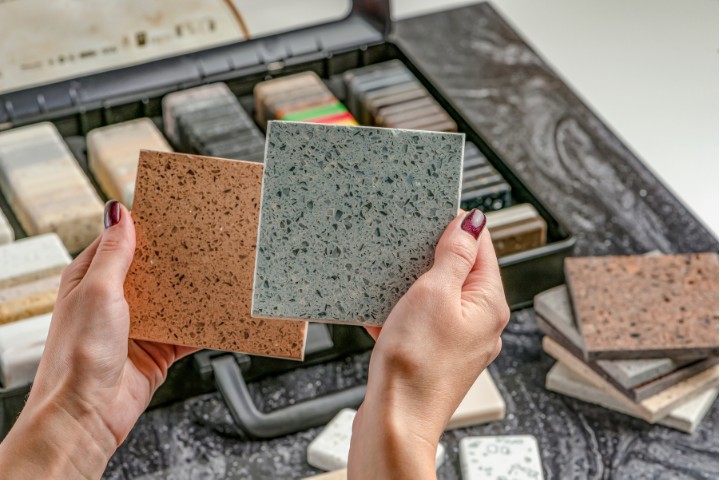
Choosing materials is about more than just aesthetics. Think about durability, maintenance, and resale appeal.
Key Material Decisions:
- Countertops: Quartz, granite, butcher block, or laminate.
- Cabinets: Solid wood, plywood, or MDF with various door styles.
- Flooring: Tile, vinyl plank, engineered wood, or cork.
- Backsplash: Subway tile, glass, stone, or decorative patterns.
Don’t forget hardware, lighting fixtures, and paint colors to pull the whole look together.
5. Hire the Right Contractor
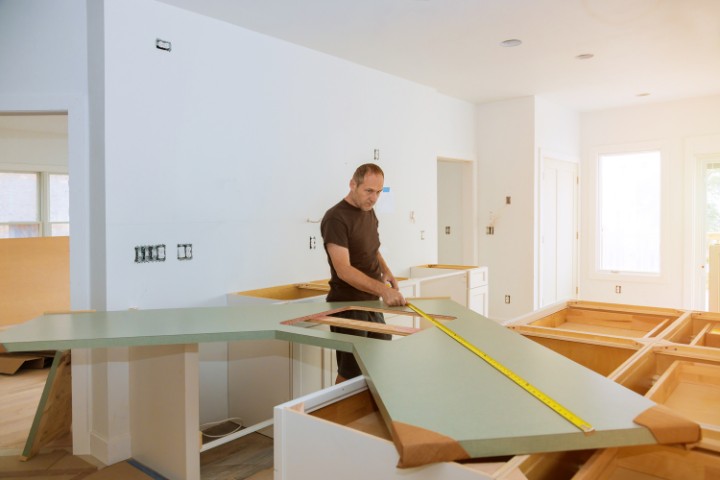
Finding a trusted contractor is crucial to the success of your renovation. Ask for recommendations, read reviews, and verify credentials.
Questions to Ask:
- Are you licensed and insured?
- Can you provide references?
- How do you handle project timelines and communication?
Request multiple quotes and compare not just price, but also professionalism and responsiveness.
6. Understand and Compare Contractor Quotes

Not all renovation quotes are created equal. Make sure you receive detailed, itemized quotes that break down:
- Labor and material costs
- Project scope
- Payment schedule
- Timeline
Beware of unusually low bids that may cut corners or lack essential details.
7. Secure Necessary Permits
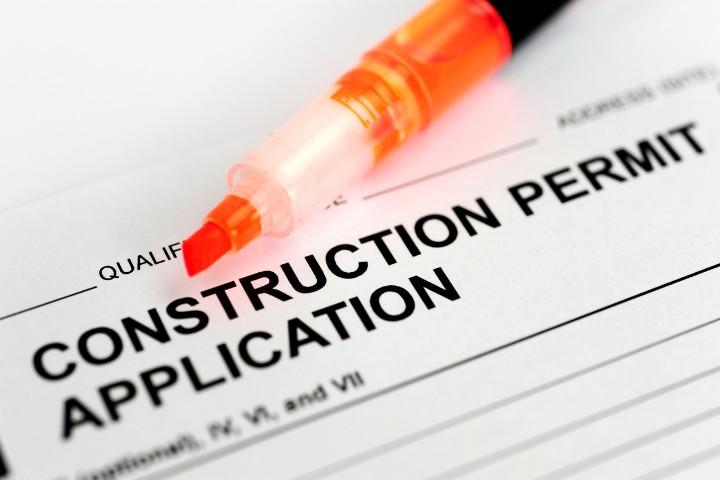
In Maryland and most states, building permits are required for structural, electrical, or plumbing changes. Failing to obtain proper permits can delay your project or affect resale value.
Work with your contractor to understand local building codes and submit permit applications in advance. Inspections may be required at multiple stages.
8. Build a Realistic Timeline

Kitchen renovations typically take 6–12 weeks, depending on the scope. Plan for potential delays related to materials, labor, or permitting.
Work with your contractor to create a timeline that includes:
- Design and planning
- Demolition
- Electrical/plumbing rough-ins
- Cabinet and appliance installation
- Final inspection and cleanup
Discuss the timeline with your contractor to align expectations.
9. Finalize Design Details Early

Avoid mid-project delays by finalizing design decisions before construction begins. Confirm:
- Cabinet dimensions and colors
- Appliance specs and delivery dates
- Countertop and backsplash materials
- Lighting plans and fixture locations
Having everything selected upfront streamlines the renovation and prevents costly changes.
10. Factor in Resale Value
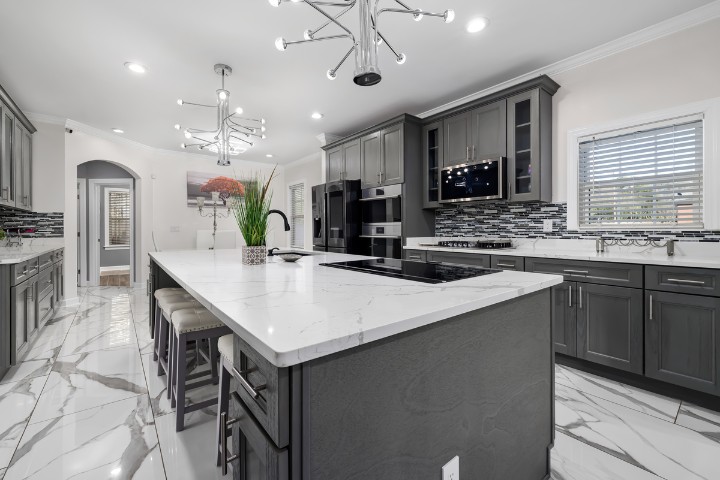
Even if you’re not planning to sell soon, it’s smart to choose design elements that appeal to future buyers.
Resale-Friendly Upgrades:
- Neutral color palettes
- Durable countertops and flooring
- Quality cabinetry with ample storage
- Energy-efficient appliances
Strike a balance between personal style and broad appeal.
11. Coordinate Deliveries and Storage

Work with your contractor to schedule material and appliance deliveries so everything arrives on time. Delays in shipping can halt progress.
If space is tight, consider renting a storage pod or using a spare room to store materials until installation.
12. Plan for Temporary Kitchen Disruptions
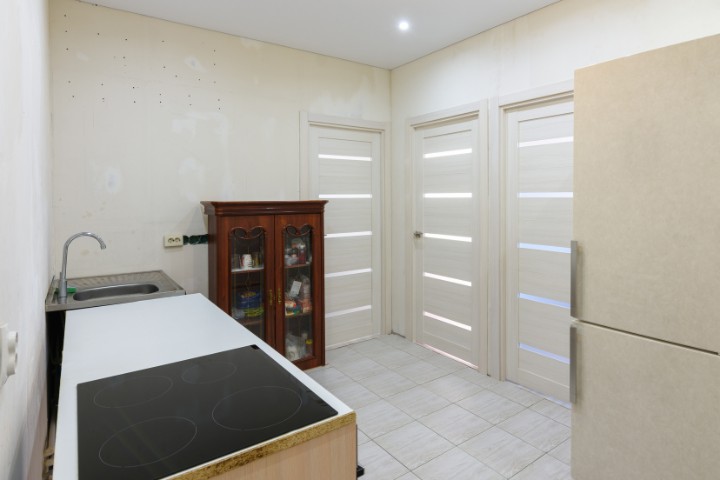
You’ll likely be without a functioning kitchen for several weeks. Set up a temporary kitchen with essentials like:
- Microwave and toaster oven
- Mini fridge or cooler
- Disposable dishware
Plan easy meals in advance or explore takeout options to reduce stress.
13. Communicate Clearly with Professionals

Maintain open communication with your contractor and design team. Set expectations about:
- Daily work hours
- Site access and safety
- Progress updates
Document any changes to the original scope in writing with updated costs and timelines.
14. Use a Renovation Binder or Digital Folder

Staying organized helps keep your renovation on track. Create a system to track:
- Receipts and invoices
- Product specs and warranties
- Permits and inspection records
- Design plans and color palettes
Keep everything in one place for easy reference throughout the project.
15. Review the Contract Thoroughly

Before signing any agreement, read the contractor’s contract carefully. It should include:
- Detailed scope of work
- Payment schedule
- Project timeline
- Change order policy
- Warranty and liability terms
Don’t be afraid to ask for clarification or request revisions.
16. Be Decisive, But Flexible

While it’s important to stick to your plans, unexpected issues may arise. Trust your contractor’s experience and be open to adjustments that improve the outcome.
Making timely decisions keeps the project moving and reduces delays.
17. Celebrate Your New Kitchen!

Once the dust settles, take time to appreciate your hard work and enjoy your new space. Whether it’s hosting a dinner party or sipping coffee at your new breakfast nook, your dream kitchen is now a reality.
Partner with Kitchen Remodeling Experts You Can Trust

Planning your first kitchen renovation doesn’t have to be overwhelming. With a clear roadmap and trusted professionals, you can navigate the process with confidence and enjoy the results for years to come.
At Lynch Design | Build, we help Maryland homeowners bring their kitchen visions to life with expert planning, transparent communication, and quality craftsmanship. From layout design to final finishes, we guide you every step of the way.
Ready to start your kitchen renovation? Contact Lynch Design | Build today to schedule your consultation. Visit Lynch Design | Build to learn more about our custom remodeling services and get started on your dream kitchen.